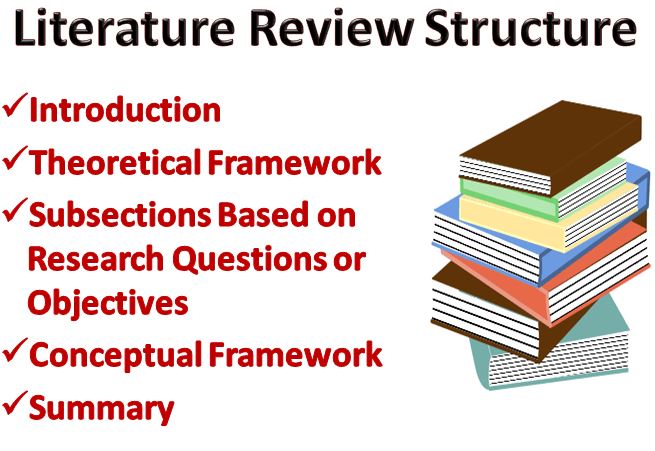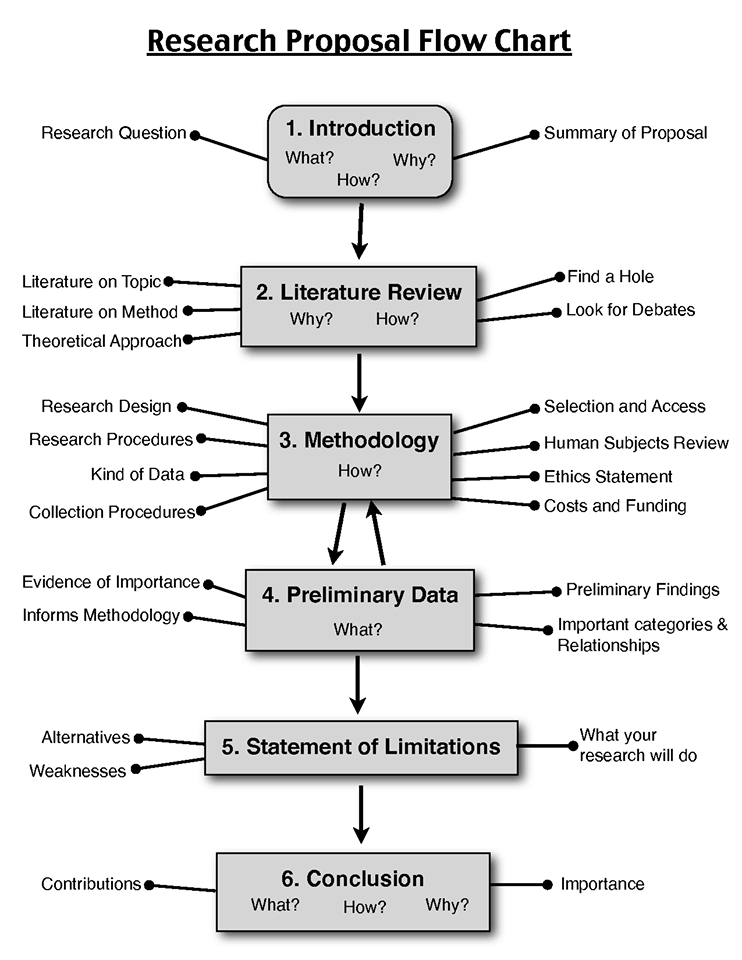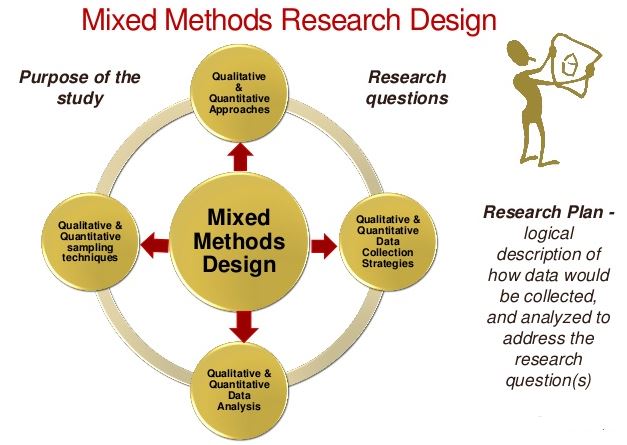What Is A Literature Review?
This post involves looking at the concept of a literature review in its entirety. A scholarly evaluation of journals and other sources of information in the name of literature is important in the process of research. The main objective is to find ways in which literature review broadens the knowledge of a researcher in his field of interest.
The essay will also look at types of literature reviews, characteristics of good quality reviews, steps in conducting a review process, how to write a good review, the functions in research and why they are important in any study. Essentially at the end of this paper, there would be substantial evidence to support the reasons as to why a literature review is a staple element in most research papers in school and outside the confines of an educational institution.
A literature review is fundamental in the writing of a research paper for both students and researchers. It essentially involves going through available research and published work on a particular topic and giving an outline or synopsis after analyzing it (Rider University).
Its intent is to answer questions posed by the researcher on the topic of interest. Moreover, allows the researcher to offer criticism and detect loopholes in research providing potential ideas for future research (Rewhorn, 2018). Therefore, literature review connects the dots of previous research to current research and provides a foundation or reference for future research.
Literature review has been said to be of significance in expanding knowledge attained by researchers and students on a topic (Rewhorn, 2018). In academic writing students are able to build critic, analysis and argumentative skills that are useful in future careers in research. This paper will look at ways and role in which literature review plays in broadening knowledge in the field of research.
Literature can be sourced from either the internet, books or peer reviewed journals. Books are said to be an advantage in literature review because they are of superior quality and information is comprehensive and integrated into one. The only downside to this source of information is out-of-date research that might not be relevant in current research.
This can be attributed to the fact that books take a long time to publish (Woodley, 2018). Library catalogues are extremely helpful when it comes to reviewing literature in books. Having an average of 15 books is a good starting point as well as checking the references to each book.
Journals are important coz they provide the most current research. Even though it takes three years before a particular research is published, it is still more up-to-date than research found in books. It is pertinent to look for and store hardcopies of these journals (Woodley, 2018). Electronic databases are useful for softcopies.
It is important to photocopy or summarize articles of interests as you skim through the latest issues. Looking through journal abstracts, citations and indices can make search results better. Due to immense technological advancement, the internet has become such a necessary tool in research. It is the fastest way to gain access to both books and journal articles for literature review. With the ease of using search engines it has fast becoming the most used tool for getting information. Using platforms such as Google one can easily search for published research using key words.
When beginning this process, researchers usually analyze research from journals of interest and peers in the discipline of study. These previous works usually highlight the main topic points focused on and enable one to provide an overview of the topic. Areas of contention or argument in published work provide platforms for more discussion (Mudavanhu, 2017).
Generally, a good literature review sheds more light on available research through a critical summary. Bolderston (2008) reports that there are different types of classifications of literature review. A systematic review is one that analyzes studies that collect secondary data using organized methods. They then provide a comprehensive summary of the available research in a thesis (Bolderston, 2008).
A narrative or traditional review uses critically chosen material collect and evaluate information that can be used to answer current and relevant questions or develop new ones. Systematic and narrative literature reviews differ in the way both reviews search and synthesize information; narrative literature review is more susceptible to bias than the former. A scoping review is a less rigid systematic review in that they are similar in every way except a scoping review is less selecting on research used. However, a scoping review requires a little more structure to eliminate any inconsistencies or gaps in search results (Bolderston, 2008).
Steps in Conducting Literature Review
There are four known courses of action involved in the literature review process. Firstly, one needs search through available sources of information; books, journals and the internet. This process should be meticulously conducted because the relevancy and authenticity of the research has a great impact on the research paper (Mudavanhu, 2017).
Before embarking on this process, a researcher needs to have posed the research problem and questions hoping to be partially addressed by existing literature. Secondly, one needs to assess the available literature; first beginning with the broad scope and eventually narrowing it down.
Further critical inspection is done in this stage to select what is applicable and relevant to a researcher’s problem question. In this stage, one can also establish the theoretical framework for the study. The central theme of the paper offers a clear guideline on what research work is relevant and which is not.
There are various factors one should consider as they inspect various forms of literature. The literature informing the theoretical framework should be valid and factual (Rocco & Plakhotnik, 2009).
A researcher should also consider the methodologies, theories and concepts posited by other researchers through their work. Moreover, one has to determine how to transfer the findings of these studies to their current scope of study. Additionally, it is important to note varying arguments from researchers’ work and be able to give a concrete reasoning behind these differences.
The next stage in conducting literature review is to develop a theoretical framework. The process of developing a theoretical framework involves identifying relevant theories in your topic of interest.
Being able to weave out unnecessary information to create the main theme and concepts is also very important in the process. Factors that affect the process of literature review will impact the process of theoretical framework (Rocco & Plakhotnik, 2009). The theoretical framework has a dependent complex relationship with the process of literature review; both process affect and depend on the other.
Finally, the last step in this process is developing a conceptual framework. The foundation of the research problem is the conceptual framework. The difference between theoretical framework and conceptual framework is the former focuses on theories and themes that explain the research while the latter discusses elements of theoretical framework and centers attention on them in the study (Taylor, 2010). In a nutshell, the conceptual framework focuses on narrowing the research problem and is contained under the wing of the theoretical framework.
Writing a Good Literature Review
Over the years, literature reviews have become a significant staple in scientific publications. Pautasso (2013) posits that there are ten rules to writing a good literature review in research. One has to first out a lot of thought and consideration into the topic of interest. A well-defined and important topic makes it easier to spend considerable time finding relevant research on it without it being tiresome. One can decide on the topic of interest through posing questions that they want the research to answer (Pautasso, 2013).
The article goes on to stress that finding a topic is not enough, one has to find their target audience for the research. Secondly, scoping and delving into relevant literature is important. Whatever research papers you use, one has to record them so as to replicate them in the future. One should take a systemized and organized approach in this process to ensure they can trace back any paper, document or file needed (Pautasso, 2013).
Even when there are literature reviews available on a particular topic of interest, there is always a different new angle to analyze research. The clear guidelines to a good review are for a researcher to be exhaustive and expansive in his reading.
When conducting literature review, the third step would be note taking (Pautasso, 2013). As human beings are susceptible to errors and short memories it is of utmost importance to jot down short notes while looking into various sources of literature.
Essentially it is so that one can write down anything of interest and come up with a draft of the review that will have to be revised to produce the final output. The rough draft does not have to be coherent but should be referenced and paraphrased where applicable. With changing times, there are different requirements in the writing of research papers.
Some journals require a short require while others a lengthy one. Identifying what is required of you and how to deliver will be the next step in the process (Pautasso, 2013). The purpose of a mini-review is to catch the attention of people who do not have a lot of time in their hands.
The problem with this review is that there is a danger of leaving out some important information and material. A full review allows for length exploitation of material and coverage but can be bypassed by busy individuals with no time.

Pautasso (2013) also posits that after writing down notes, one might be called upon to decide whether to write a descriptive or integrative review. A descriptive literature review will center on what methods were used to collect data, findings and the analysis and discussions of each study while an integrative review attempts to find similar findings and concepts from the material reviewed (Pautasso, 2013).
The article further states that the decision on what type of literature review to be use; systematic versus narrative, integrative versus descriptive and mini versus full depends on the publishing journal requirements, available time for writing the review, number of authors in the paper as well as the available research on the chosen topic.
There is a delicate balance to achieve in making of a good literature review. The review should be able to attract a target audience from related areas of interest but also maintain specificity to the topic (Pautasso, 2013). A review that is too broad might end up losing its readers and too narrow might close off potential interested readers.
It might be especially problematic for an interdisciplinary review that is aimed to integrate two areas of study. Researchers may need to focus on topics that surround the two disciplines to ensure none of them feels left out. Pautasso (2013) notes that making a summary of literature is not all what it takes to write a good review. An expository evaluative analysis of the methodologies is key as well as the ability to point out discontinuities in the research that begs for more future research (Pautasso, 2013).
A literature review should highlight significant headways and accomplishments in the area of study, showcase questions that stem from relevant research and reveal major areas of contention. To make sure that a review includes the three factors, a researcher might have to partner with other peers who have different abilities and talents to make varying contributions for the overall success of the review.
Apart from being consistent, a good review must have a good structure (Pautasso, 2013). It generally includes an introduction, the main ideas and a conclusion. The structure needs to provide a consistent flow for the reader. Systematic reviews might differ in a small way because they require that the researcher include search results, key words used and even the source or data base (Pautasso, 2013).
Before literature reviews are published in journals a researcher can incorporate peer reviewers to provide objective feedback that should be taken into account. Varying accounts of feedback shed more light on the topic being researched on. This will greatly improve the draft review. One is also required to re-read and correct any form of errors in the review to improve the quality.
To improve an understanding in the topic and eliminate bias, a researcher should also conduct their research separately before embarking on extensive literature review. Some published work might contain bias from either the researcher being too harsh on themselves or too easy (Pautasso, 2013).
Publications these days are required to contain literature reviews that contain recent and up-to-date research so that they do not become obsolete before being released themselves. However, this does not mean that research work published a long time back should be completely sidelined. Since a literature review should not point out gaps in research that have been addressed in recent research, a researcher needs to keep abreast for new developments and publications in journals to avoid that complication (Pautasso, 2013).
Although a researcher can outrightly state the period of review coverage, the publication process still takes a long time. After publication, new literature review will be published and a researcher might be required to update their review (Pautasso, 2013).
Scholars use literature reviews by rearranging important information in a specific way depending on how they plan to tackle a research problem to make a contribution in a specific field of study. Scholars can give a new understanding of old research through a literature review.
On behalf of readers, scholars can map out how far research into a topic has gone, what has been done and what is yet to be accomplished. Scholars can also use literature reviews to address readers’ questions and offer guidance on important and suitable research. They are also able to evaluate so many sources and identify solutions to the problem at hand.
Functions of a Literature Review
A literature review performs many functions. One key function is to highlight important and influential research in a field of interest. A leading piece of research is one that brings forth new concepts and information in a particular field (Gray & Malins, 2004). These new ideas revolutionize our scope of thinking and understanding prompting new research and approaches.
Therefore a researcher can pick and choose what types of research to go in detail, what to mention and what to skip. Leading research is given prominence because of its heavy impact in a specific field. As literature review involves a skimming process to determine what literature is relevant to a particular study and which is not a researching can be able to compare different concepts and arguments from reviewed literature (Mattern, 2010).
There are usually different arguments posed in different papers and the literature review explores a wide range of them to form a conclusive well-represented summary. Getting a full understanding of all concepts pertinent to a topic enables one to also understand the research topic in general.
Harris (1985) posits that a literature review also purposes to show the evolution of ideas from history to current research trends. It essentially helps to present data chronologically to give more clarity of thought. Aside from offering a historical perspective, a literature review also serves to give an overview of new developing knowledge in a field.
There is constant publication of new research and studies and a researcher needs to keep abreast of most of these new developments (Harris, 1985). Within reasonable capacity, a researcher should evaluate and summarize new research and try to see how the research problem fits into the whole grand scheme of things. Other disciplines might require a researcher to look into studies from other countries in other languages because researchers from non-English speaking countries have also made tremendous contribution in the field of research.
Gaps in research will always be identified when conducting literature review. Sometimes researchers may omit some material from studies because they are less appealing to the public or even the researchers themselves.
Some research problems also do not attract as much funding as others and researchers may opt out of those studies. Some research topics make it difficult to collect data on. As much as new research may be developed to fill in gaps, sometimes well-structured and developed research can be done on existing research areas. It is evident to see that research undertaking has many drivers and that consequently determines what gaps are left in the publications.
Literature review can be used point out new emerging trends in research. The objective of the study enables a research to find new developments in research. A researcher would need to start from a wider scope of study before narrowing it down in order to look for new trends in that field of interest.
One major function of a literature review is to summarize the main ideas in a particular topic of study. When writing a literature review, the researcher may impose their subjective opinions on the ideas presented from reviewed literature; causing bias. Before beginning the summary process, it is important to check credibility of the sources as well as writers.
A scholar needs to have developed critical analytical skills to assess key ideas that fit into his work of study from relevant material. A research is also able to create a new idea or merge existing concepts during the evaluation process.
Importance of Literature Reviews
Firstly, the literature review serves to clearly define a research problem. As much as a research question is what directs and structures literature review, it works from the opposite direction as well. What a researcher learns from evaluating different literature one learns a lot of things.
Typically, a scholar will find out what has been studied, gaps in the available literature and further suggestions for research. All these information goes in to shape the research problem further. It enables provide a clear direction of the research. Highlighting the gaps in areas of study focuses a researcher and enables them to gain greater perception and comprehension of the material.
When one goes through various literature and research, they are equipped with tools of conducting research. One is further educated on different methodologies of conducting research. A researcher will be in a position to compare and contrast methods that have been used and what has been proposed to ensure a smoother and efficient process.
By comparing and contrasting, one can weigh the pros and cons to different procedures and pick the most effective methodology. Sometimes methodologies picked fail to address the research problem and that is where literature review can help. It allows one to justify what procedure they have used in their research.
Literature review also serves to broaden knowledge of a researcher in their field of study. As one reads extensively and broadly they encounter a lot of what other researchers have written and published. A literature review serves to familiarize one with most knowledge that has been disseminated and questions raised from a particular research problem.
Conducting research for an advanced degree calls into question a researcher’s knowledge and expertise. Therefore, a literature review will serve to meet this requirement. Additionally, a literature review will enable a researcher to figure what their contribution is to the current knowledge.
After conducting your study, getting finds and interpreting those findings, a literature review aids one in making comparisons between findings to make a conclusion. In essence it facilitates contextualization of findings within the existing body of knowledge.
A literature review can help a researcher seem confident and well-prepared to the target audience. It is a clear indication that one has done a lot of reading and fact-finding before embarking on tackling the research problem (Smith, 2012). Therefore, the audience easily trusts one’s results, conclusions and recommendations.
Finding a lot of credible and leading research as well as posing good arguments shows one level of expertise and knowledge in their field of study which can come in handy especially for PhD students who are hoping to have their dissertations accepted.
A researcher therefore needs to critically discern and evaluate what articles to include in their literature review and what number. Also, one needs to stay close to the main theme as synthesize all the information available from the relevant sources.
It also follows that a good well-defined and researched literature review prevents a scholar or researcher from committing plagiarism (Smith, 2012). Research papers need to produce a creative and original idea in their specific fields of study. Repetitions are not tolerated.
Each new published work needs to contribute something different or broaden knowledge in a particular topic. Unless there is need to repeat some research, ones credibility might be in question if such a scenario occurred. Because most research are dependent on funds and time, a researcher needs due diligence to avoid wasting such resources.
In case one finds out at the literature review stage that their research problem was already addressed by previous research, then they can modify the topic and choose to address an original idea. In a way, it streamlines your research focus and makes clear the problem being addressed. The selection process in literature review is meticulous and rigorous and therefore one starts from with a broad focus and eventually narrows it down.
Apart from showing the researcher’s competencies and preparedness throughout the entire literature review process, it shows the linkage between past, current and future research.
Literature Reviews and the Broadening of Knowledge
One of the main objectives of conducting a literature review is to broaden the knowledge of the researcher in his area of study. This happens in two ways; one through extensive reading of numerous sources to find ones pertinent to the research problem and two finding gaps in research and attempting to recommend future research to fill the research gaps.
A standard literature review is usually well-researched, synthesized, structured and of high quality containing credible authors. A research gap is a research problem or question left unaddressed by a particular study that begs for further clarification (Moeini, 2014).
Having a research gap in your study does not discredit your competency because it shows originality at tackling problems in a particular field left to be tackled. Furthermore a research gap is indicative of great knowledge in that area of study and a well-carried out research (Moeini, 2014).
Sometimes identification of a gap can lead to the development of a research problem. Therefore it shows that identification of a research gap builds ones knowledge as a researcher is required to have a deep set of understanding in the field for that to occur (Fink, 2005).
Gap finding leads to categorization of researchers in the field. There are types of researchers when it comes to this area of research. First class researchers are those that are well skilled and knowledgeable in their respective fields. Attaining this particular class takes a lot of time and experience and knowledge (Moeini, 2014).
The second class researchers mostly get recommendations from professors in school and therefore do not necessarily invest time and effort into finding a research problem. The third group is the third class which is mostly influenced by the environment when it comes to choosing a research topic (Moeini, 2014).
Finding a research topic or gap therefore calls one to actively and extensively read broadly on material related to their interest. A researcher will go through countless sources and even sometimes read other systematic literature reviews to gain understanding of what is required of him and find a clear direction for his research paper (Fink, 2005).
Looking for trends and new research requires previous background knowledge in a particular discipline. Every new paper poses a different argument, theories, methodologies and themes fully equipping the researcher with a wide range of choices on what is applicable in his study. In this process, one is required to delve into citation reports and analysis of content further broadening their knowledge spectrum (Moeini, 2014).
A new researcher in the field would widen their scope by looking at the research of more seasoned and experienced researchers in the field. These leading researchers are those who have made an important in the body of knowledge and have their research widely published and distributed. Through the literature review process, one can learn the tricks of conducting a good quality research paper and how to meaningfully make a lasting contribution as a researcher.
As new trends are constantly emerging and old ones shifting, a literature review broadens a researcher’s knowledge by always keeping them on their toes and ensuring they read extensively to avoid duplications. It is also evident that to conduct and formulate a good quality literature review one must go through a number of resources (Ridley, 2012).
Simply reading and noting down relevant material to make a summary contributes profoundly to a researcher’s wealth of knowledge. Furthermore, discussions among peers that stem from the research process when looking for feedback or suggestions serves to illuminate on new concepts and ideas. When addressing contrasting arguments in different research papers on a particular topic, a researcher has to either form an opinion from their own wealth of knowledge or embark on further reading to draw conclusions; consequently one continues to build their knowledge in the area (Torracro, 2005).
Any researcher needs critical thinking, analytical and organization skills that come in handy in the research process. The steps to conducting and formulating a literature review serve to build these skills in budding researchers who lack them.
When forming the theoretical and conceptual framework, a researcher has to critically analyze various theories before forming a conclusion (Torracro, 2005). One would require an in depth understanding of the origin of the theories and how they govern the relationships in the problem matter.
A researcher would have to fully comprehend theories pertinent to the problem area and concepts that fall within the theory under the specific subject matter. This entire process further illuminates on more information in the field of interest for the researcher (Ridley, 2012).
Conclusion
A literature review is an important aspect in many research papers because of its many benefits and functions especially of importance is the function of broadening knowledge of a researcher in their field of interest. Apart from giving focus to the research problem, a well written literature review shows the deep understanding of the content being studied and researched on.
There are various types of literature reviews. The selection of the appropriate one depends on factors like funding, publishing journal and time allocated for research. The process consists of going through various sources of information to pick relevant topic material, making notes to form a draft review, allowing feedback of the review and finally structuring it.
A good review bridges old knowledge with new one by identifying research gaps and areas that might prompt future research. It is a necessary part of a dissertation, thesis or any research paper because it shows the competencies of a researcher and enables a researcher to avoid any problems of duplication and plagiarism.
It also develops critical thinking and analytical skills as they skills important to the process of research. This process of literature review is an ever ending process that seeks to offer a theoretical background to a study and help a researcher understand how their research will fit in the existing body of knowledge; their contribution. Adherence to a good structure and theme is importance in the overall process of literature review.
References
Cooper, Harris M., A Taxanomy of Literature Review, Annual Meeting of the American Educational Research Association (69th, Chicago, IL, March 31-April, 1985)
Taylor, D. (2010). The literature review: A few tips on conducting it.
Mattern, S. (2010). Literature Review Tips.
Bolderston, A. (2008). Writing an Effective Literature Review. Journal of Medical Imaging and Radiation Sciences, 86–92.
Moeini, S. (2014, September 12). 6 (very useful!) Approaches to identify research gaps and generate research questions.
Mudavanhu, Y. (2017). Quality of literature review and discussion of findings in selected papers on integration of ICT in teaching,role of mentors, and teaching science through science, technology, engineering, and mathematics (STEM). Academic Journals, 189-201.
Pautasso, M. (2013). Ten Simple Rules for Writing a Literature Review. PCBI, 1.
Plakhotnik, T. S. (2009). Literature Reviews, Conceptual Frameworks, and Theoretical Frameworks: Terms, Functions, and Distinctions. Sage Journals, 120-130.
Carole Gray and Julian Malins, Visualizing Research: A Guide to the Research Process in Art and Design (Burlington, VT: Ashgate, 2004). p. 43.
Rewhorn, S. (2017). Writing your successful literature review. Journal of Geography in Higher Education, 143-147.
Woodley, M. (2018, March 22). The Three Types of Sources.
Fink, A. (2005). Conduction Research Literature reviews: From Internet to Paper 2nd Edition. Thousand Oaks, California: Sage.
Ridley, D. (2012). A step by Step Guide for students 2nd Edition. Los Angeles: Sage.
Smith, N. (2012, January 17). Purpose of a Literature Review.
Torracro, R. (2005). “Writing Integrative Literature Reviews: Guidelines and Examples. Human Resource Development Review 4, 356-367.
Other Relevant Blog Posts
Did you find any useful knowledge relating to a dissertation literature review in this post? What are the key facts that grabbed your attention? Let us know in the comments. Thank you.





